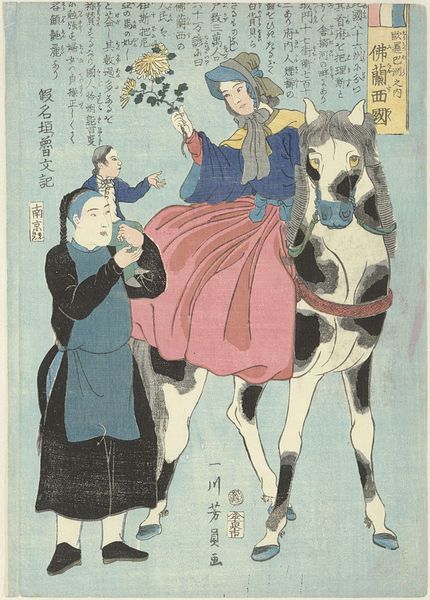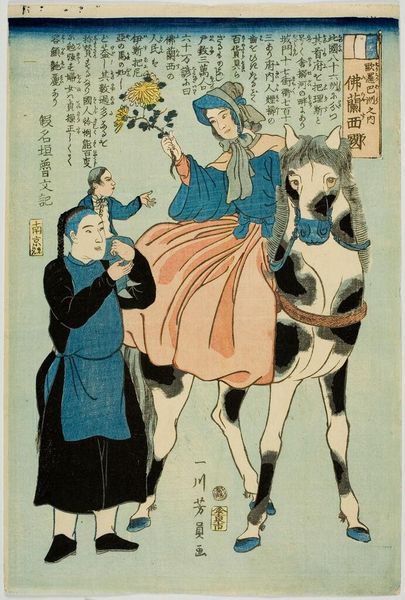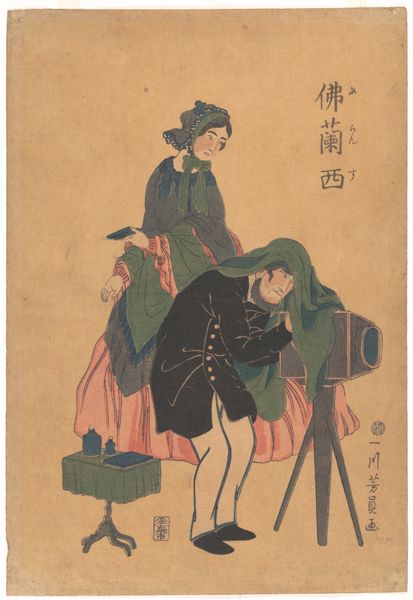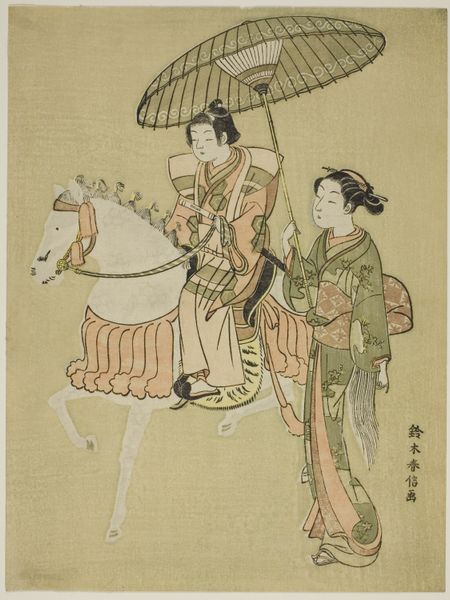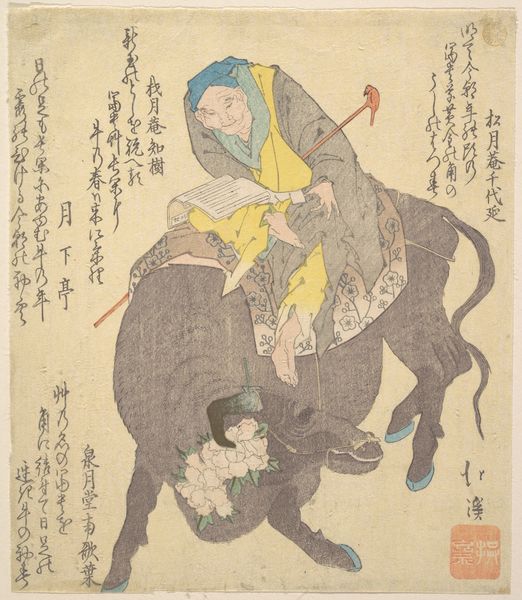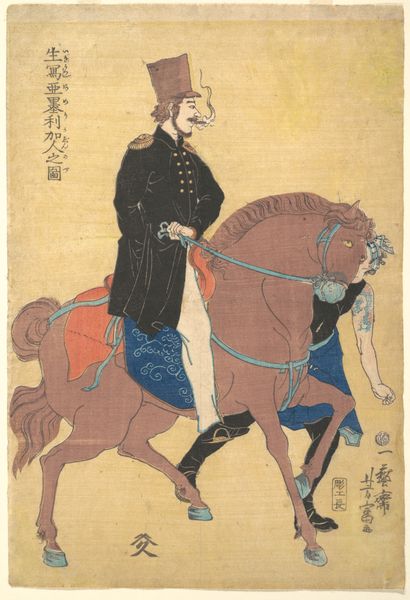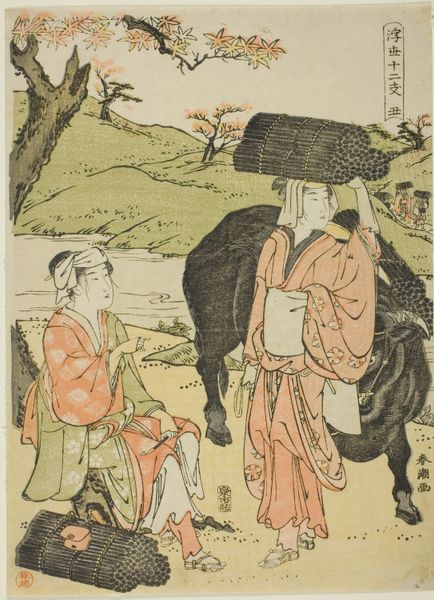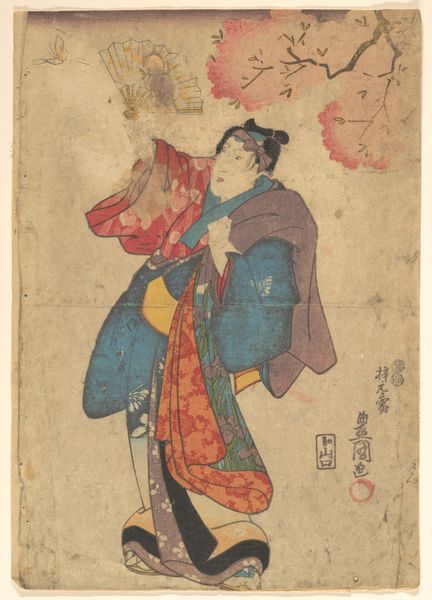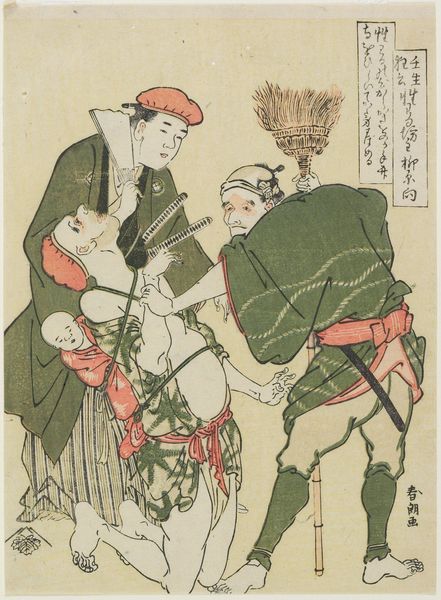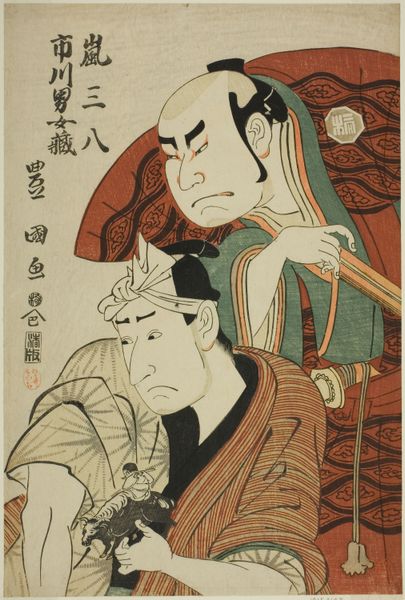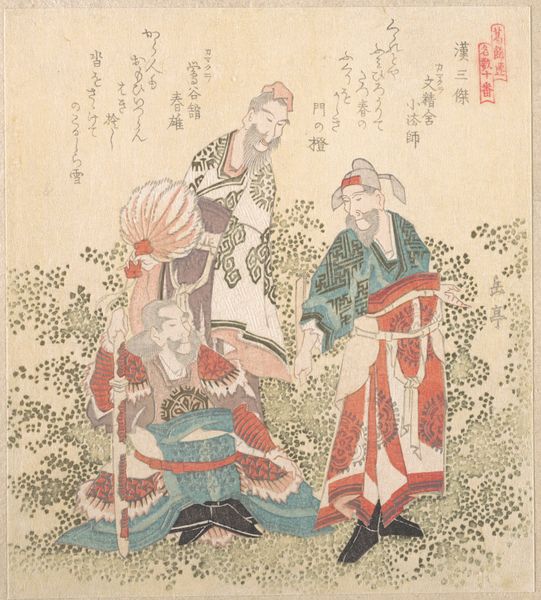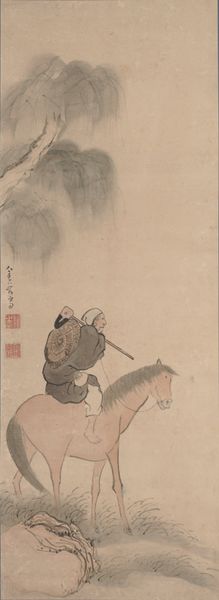
print, woodblock-print
#
portrait
# print
#
asian-art
#
ukiyo-e
#
figuration
#
woodblock-print
Dimensions: 13 1/2 x 9 1/4 in. (34.3 x 23.5 cm)
Copyright: Public Domain
Curator: Right, let’s take a look at this striking woodblock print. It's entitled "France" by Utagawa Yoshikazu, and dates from sometime between 1850 and 1870. It’s part of the Metropolitan Museum of Art's collection here in New York. What’s your first take on it? Editor: My initial reaction is... disorienting, almost deliberately so. The perspective feels off, and the colour palette—muted yet clashing—creates a slightly uneasy feeling. The rendering of the figures is a little caricatured, a far cry from European naturalism. Curator: Precisely! That unease is part of its power, I think. These so-called Yokohama prints often depicted foreigners through a Japanese lens, processing what was then a fairly new encounter with the West after the opening of Japan. It’s interesting, the artist focuses heavily on this idea of "Frenchness" but what that even means becomes a question. Editor: You can certainly see the cultural filters at work. The woman on the horse, presumably "France" personified, appears in Western clothing but it’s a costume. And is that a groom next to her with his very distinctive hair? He seems unimpressed. Are there implied class differences or perhaps stereotypes being subtly highlighted here? Curator: Absolutely. The artist is working with received imagery and popular ideas, but imbuing it all with an inherent critique through his artistic choices. Look at the inclusion of that strange European script. Do you find yourself able to interpret this as an actual script? It looks like pure decoration. A surface veneer of the Western world that might even reflect a subtle level of distrust and distance. Editor: I hadn’t thought of that, but you’re right. It underscores the symbolic weight attached to the image of the ‘Westerner’ during that period. Curator: And yet, despite its satirical undertones perhaps, the print provides a fascinating window into a specific moment of cultural exchange and observation. Even these slight stylistic details have so much to tell us about power relations. Editor: It certainly complicates any simplistic notions we might have about a unified idea of 'globalization' in that period. This offers up so much complexity to consider about identity in flux. Thank you, I really wasn't expecting it to hit so hard!
Comments
No comments
Be the first to comment and join the conversation on the ultimate creative platform.
